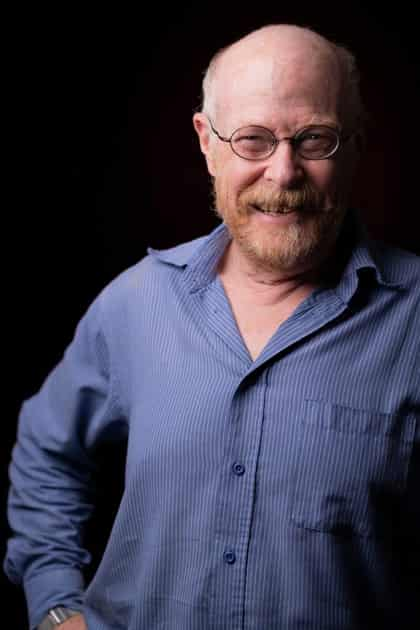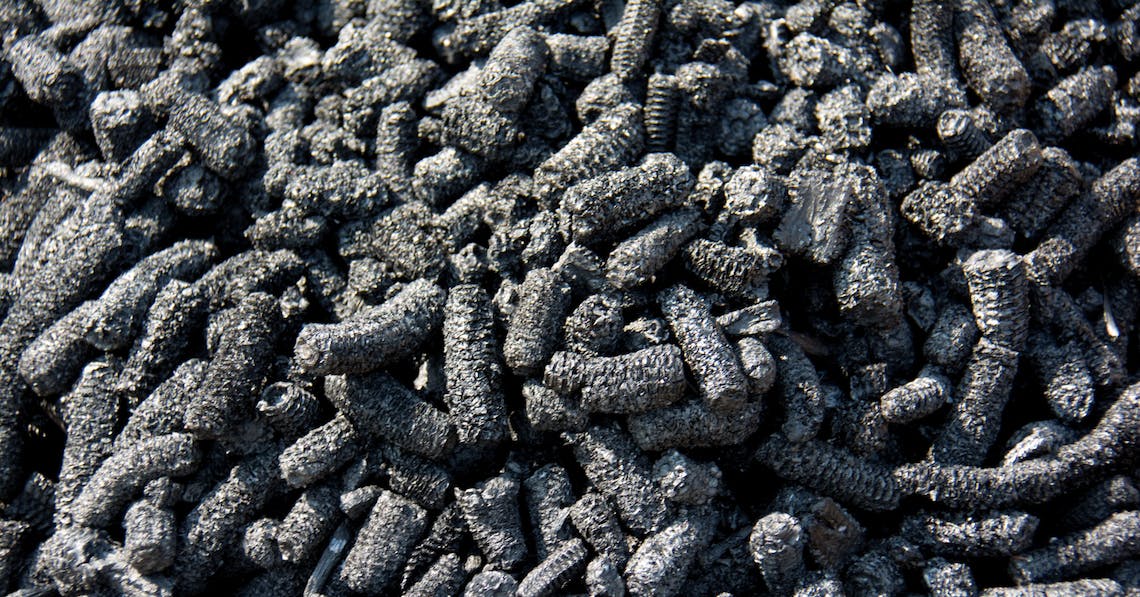Post-COP 26 everyone is excited about the climate. There is even talk of the importance of removing carbon from the atmosphere, not merely reducing excessive emissions of it. Oddly, this discussion focuses almost exclusively on the West which, although responsible for our climate problems, is a small and shrinking portion of global population, today 16.6 percent of 7.8 billion people and by 2050 down to just 13.2% of 9.5 billion. Where is the rest of the world? Today it suffers worse from climate change than the West and, after all, it is already most of the people on the planet, people whose children – several billion of them – will inherit this world. Can we ignore so much of the global population, assume that they have nothing to say about climate change and nothing to contribute to slowing it?
I do not think so. But where to start? I think it best to start at home. Why? Because:
• Basic biochar, made with waste materials using the lowest cost, DIY technology is a blessing to Thailand’s poorest farmers.; and
• An economic, environmental and social blessing for all Thais that should cost little and provide a lot.
What is biochar?
Biochar begins as carbonous biomass – wood chips, saw dust, forest slash or crop waste ranging from cocoa pods to corn stalks – heated very hot in the near absence of oxygen (pyrolyzed). In Europe, it is pyrolyzed in big, costly, high-tech machines to produce custom chars for food or pharmaceuticals. In Africa, it is usually made using “technology” as simple as a trench in the ground, char that is excellent for agriculture or animal feed. Let us focus on this, the most basic char appropriate for our poorest farmers.
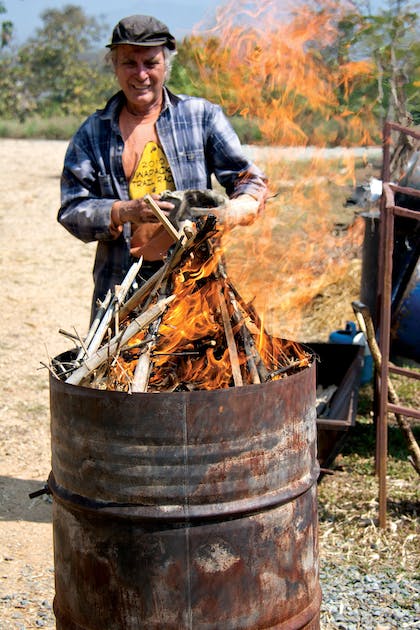
Why biochar for Thailand?
Some of our waste biomass (think coconut husks) is concentrated because of the nature of processing and is, therefore, good for large-scale biochar production. Many forms of waste biomass, however, (think corn stalks) are widely and thinly dispersed. It is not cost-effective to collect such waste for large-scale production, especially where fields are steep and rocky, and the road network underdeveloped. Left in the field, however, this crop waste feeds huge, smoky fires.
Dispersed waste biomass does lend itself easily to low-tech biochar production. Even the poorest farmer farming the worst land can make biochar at no cost. This farmer must bring his/her crop to market and biocharring the waste reduces volume and weight fivefold, making it easy to transport at the same time. But if we think beyond the field, there are four national reasons for promoting biochar here:
1. Every tonne of biochar plowed into the ground or fed to animals sequesters two tonnes of CO2 – critical if we are to meet our international obligations.
2. Making biochar from waste biomass not burning it eliminates haze (PM2.5), improving public health, cutting national healthcare costs and improving the prospects of hospitality
3. Applying biochar to degraded soil restores it better than synthetic fertilizer and increases water retention, both critical as we seek greater value-added, lower unit-cost agriculture and climate change resilience.
4. Making basic biochar provides jobs and new income to many poor farmers and a grassroots stimulus to the economy.
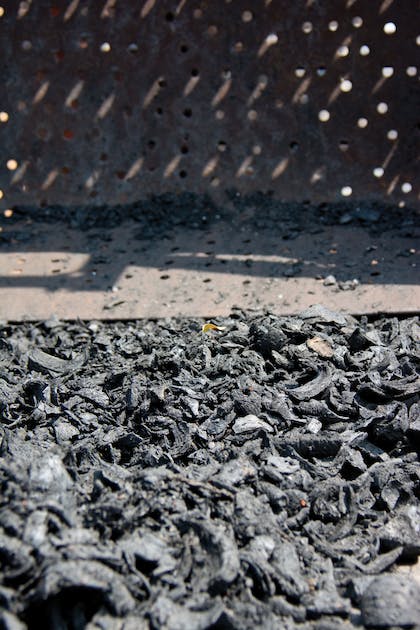
Why does an almost developed country need basic biochar?
This question is critical. We live in two separate countries. At issue is how – indeed if – we can unify them. The first is not merely a “higher-income developing country”; it is a developed country. The second is still very much a less developed country.
Let us start with the sad truths: We are among the most unequal societies in the world and have the peculiar distinction of “fielding” an above global average of number of billionaires per capita. Our national capital is among the most modern metropolises in the world, magnet for the Asian headquarters of big MNCs, NGOs and IOs. We have a navy with submarines, will soon be the aviation hub of Asia and are a contender for a place on the moon.
Still, half of Thais live in backward rural areas, the agricultural sector contributes just 10 percent of GDP, and 40 percent of farm families live below the poverty live. We will never become a developed country if we must drag half the population along as free riders, nor can we develop without a robust domestic market to see us through international economic downturns such as we are experiencing today.
So what are we doing? In urban areas, we build roads, bridges and “world-class” universities. These contribute to PM2.5 levels (and public health problems) and greenhouse gas (GHG) emissions, and fractionally to average vehicle speed. Our best universities still do not rank in the top 50 universities in Asia or the top 500 in the world (in sharp contrast to those of countries such as Korea, Singapore and Taiwan that 50 years ago were light years behind us). In rural areas, we focus on demonstration projects and development of “new” (meaning “new to Thailand” and so often overpriced) technologies. These look great on TV, but generalize badly to the poor public. Why? A project to diversify the crops of one village that costs millions and requires mobilizing the villagers from two ABT is not replicable. “Smart Agriculture” that can increase production with computerized water management is fantastic for relatively educated middle class farmers, but is beyond the means of poor farmers.
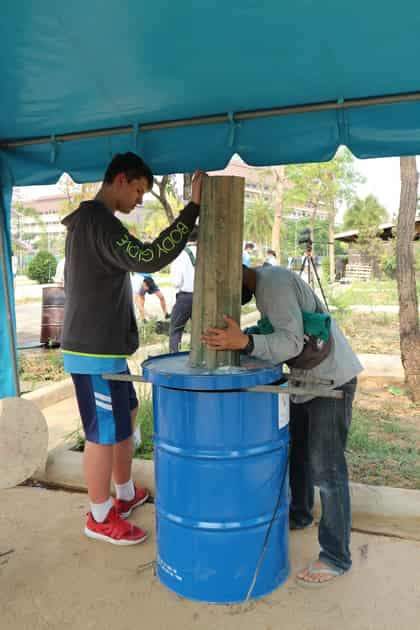
The ultimate question is as old as development: Can we simultaneously improve the quality of life of the poor and national productivity in an egalitarian fashion?
Why basic biochar for Thailand’s poorest farmers?
I think so. This is why I want to introduce you to basic biochar. When we consider most rural development schemes we recoil at the cost. Imagine replicating a multi-million baht project in every village in the North, Northeast and South. Impossible. What about incentives for “smart agriculture” projects? Much cheaper – until you consider the cost of millions of now unemployed, unskilled, rural refugees clogging cities and the corruption and market distortions that accompany such programs.
I want to propose something radically different. I want to propose a market based system that should cost very little, grow by itself, sequester CO2, reduce haze and PM2.5, provide rural jobs for the poorest rural people, and generate enough new income to stimulate the domestic economy.
How do I propose to do this? By training several thousand poor farmers to make biochar, and sell the resulting carbon removal credits on global markets; then use that biochar to improve their yields and retain water in the face of drought. Once trained, these farmers will return home where they will train other farmers who want to make biochar. Because making biochar is largely costless and it requires no effort to sell the credits online, farmers ought to be interested. The biochar will, after all, be a second “crop” from the corn or whatever they are raising. Because the farmer is poor, (s)h will spend this new income on local purchases of Thai products, not imported, luxury goods.
The more money poor farmers want to make by biocharring crop waste, the less burning takes place. From an environmental point of view, this means that fewer GHGs will be generated by crop waste fires. From a public health perspective, less burning means less haze and less PM2.5. Less PM2.5 will save approximately thousands of lives and the cost of 10s of thousands of hospitalizations annually. Less haze also helps the hospitality industry that loses billions of baht every burning season because of haze.
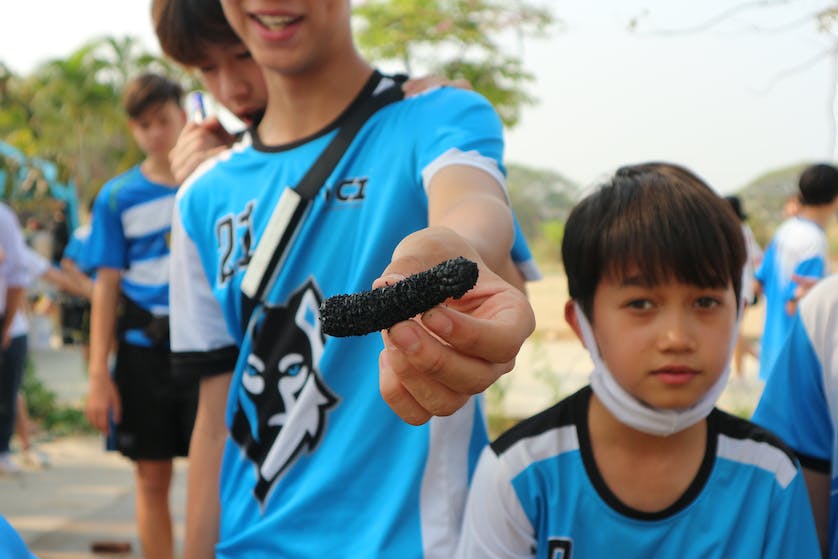
Is such a basic biochar solution possible?
This is the big question or actually three questions: (1) Will it cost too much? (2) Does enough crop waste get burned to make a difference? (3) Would farmers go along?
Suppose we start small with just the eight provinces of the Upper North (population about 6.5 million).
1. No, it would not cost too much. Warm Heart Foundation (CM273) runs trainings for farmers that require 1 day, cost a few thousand baht and lunch for the participants. We think that a good training group is 50 farmers, which means that with 20 trainings it would be possible to train 1,000 farmers. We need to add red truck fare, etc. for participants to the cost, but you could “seed” the entire North for 3-500,000 baht.
2. Yes, there is plenty of crop waste in the North. If we consider just corn, for example; the North grows roughly 60 percent of Thailand’s annual 5.5 million tonne corn crop. Because most of the corn plant is waste, however, 3.3 million tonnes of maize kernel leaves behind 4.2 million tonnes of waste biomass. If just one quarter of this (1 million tonnes) is burned, the GHGs released are the equivalent of driving a car 6.4 billion km a year – every year – and the PM2.5 generated is equivalent to the entire population of the North smoking 188 cigarettes per day – every year. Not burning one quarter of corn waste alone would make a big difference to our carbon footprint and reduce haze significantly. Alternatively, 1 million tonnes of waste will make 200,000 tonnes of biochar and sequester 400,000 tonnes of CO2 annually.
3. Yes, farmers will go along. There are many people who view poor farmers as stupid, traditionalists who “just like to burn things.” To test this, Warm Heart went to the Ampure reputed to be the largest source of haze Chiang Mai. We offered farmers a pittance to make biochar. We had to ask them to stop when they had made 15,000 bags because we had no more money.

Is basic biochar a triple bottom line solution for both Thailands?
What does “triple bottom line” mean? It means that a project is environmentally sustainable, profitably (sustainably) improves the economic well-being of all members of the “target market,” and improves the quality of life (for example, the health) of all. So what about basic biochar?
– For developed Thailand, it provides an immediately implementable, low-cost, partial solution to Thailand’s carbon emissions problem and needed to meet international commitments. It also provides important economic benefits. It provides jobs and new income for lots of the otherwise largely dead weight rural poor. This new income comes from abroad as if from an export, while biochar increases staple crop yields, releasing capital to produce export crops. Domestically, domestically spent new income serves as an annual grassroots economic stimulus.
– For less developed Thailand, basic biochar is equally important. While the rural poor currently see no alternative to most burning and are unimpressed by the idea that they have anything to do with climate change, they suffer more from it than the rest of us. Without air conditioning, piped water, screens or modern pesticides, they are not “climate change resilient.” Basic biochar can increase their climate change resilience while also reversing environmental damage and lowering input costs. Lower particle counts reduces the incidence of illness and basic biochar offers well-paid work near home during the dry season.
Can anything else be done?
A public education program is critical to advance the cause. To our knowledge, there has never been a serious, nationwide, public health campaign about the dangers of haze and PM2.5. We believe that a well-designed program could work if aimed at the rural population, warned about the consequences of PM2.5 inhalation and connected PM2.5 to the deaths of babies and the elderly, intellectual deficits in children and shortened life spans for everyone – noted that most PM2.5 in rural areas comes from burning – and then provided a good solution such as basic biochar. We already have a national fund to support such programs, but only local, not regional or national projects.
